You are here
Fauna of Zhongar-Alatau Park.
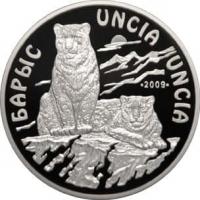
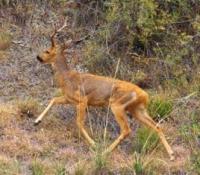
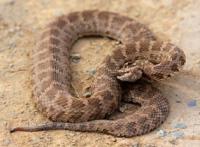
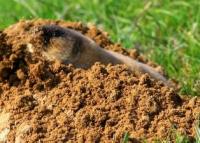
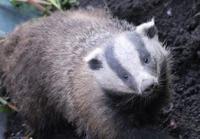
Ecological tourism in Zhongar-Alatau Park.
“Nature is not a temple, but a workshop and man is a worker in it”
I.S. Turgenev.
Wildlife watching in Zhongar-Alatau nature park.
The fauna of Zhongar-Alatau State National Natural Park includes 2 species of bony fish, 4 species of amphibians and 8 species of reptiles, 169 species of birds, 49 species of mammals. According to the results of research in 2017 in the state national natural park “Zhongar Alatau”, the number of insects from 576 species reached 615 species of insects belonging to 6 orders, 48 families, 323 genera.
Insects of Zhongar-Alatau Park.
In Zhetysu Alatau, in general, the leading position is occupied by hemiptera (Hemiptera) and beetles (Coleoptera). The second positions are occupied by Orthoptera (Orthoptera) and Lepidoptera (Lepidoptera). The role of hymenoptera (Hymenoptera) and diptera (Diptera) is great.
Among the inhabitants of the herbaceous and shrub layers in different stations, a maximum of 33 families of insects were identified, and their numbers ranged from 92 to 435 specimens. per 100 strokes of the net (Kashcheev V.A. 2007).
Insect fauna of Zhongar-Alatau Park includes quite a lot of endemic and relict species that are scientifically interesting. Their number, judging by some studied groups of insects, reaches 3-5% of the total species composition.
The following genera of insects are distinguished, which can serve as background and dominant for mountain fruit forests: Dragonflies - Odonata, Orthoptera - Orthoptera, Mantises - Mantoptera, Earwigs - Dermaptera, Hemiptera - Hemiptera, Homoptera - Homoptera, Coleoptera - Coleoptera, Hymenoptera - Hymenoptera.
The background species of Zhongar-Alatau State National Natural Park among insects are:
Mourning butterfly (Nymphalis antiopa) is a diurnal butterfly of the family Nymphalidae. Well distinguishable appearance. Butterflies fly in June-September. Confined to deciduous-fir and spruce mountain belts. Population is low throughout
Day peacock eye (Aglais io) - also belongs to the family of polychromatic butterflies (Nymphalidae). Well distinguishable appearance. Butterflies fly in March-September. Found everywhere. The number is low.
Zorka (Anthocharis cardamines) is a diurnal butterfly of the white butterfly family (Pieridae). Well distinguishable appearance. Habitats: meadows, sparse bushes, forest edges, river valleys, mixed-grass slopes in gorges at altitudes up to 3000 meters above sea level. Flight: April-July. Forage plants – Cardamine, Turritis, Sisymbrium, Brassica and other cabbage plants (Brassicaceae). The pupa overwinters. Very ordinary looking.
Swallowtail (Papilio machaon) is a diurnal butterfly from the swallowtail family (Papilionidae). Habitat: varied landscapes from foothills to high mountains, including cultivated areas. Flight: April-November. In the low mountains there are two generations, in the middle and upper mountain zones there is one generation. Forage plants – Artemisia dracunculus (Asteraceae), Prangos pabularia (Apiaceae). The pupa overwinters. A rare species in the mountains.
Tien-Shan Apollo (Parnassius tianschanicus) is a diurnal butterfly from the family of swallowtails (Papilionidae). Habitat: steppe mountain slopes and mixed-grass mid-mountain meadows. Flight of imago: June-August. Forage plants – various sedums (Sedum spp.). The caterpillar hibernates. Normal background view.
Podalirius (Iphiclides podalirius) is a diurnal butterfly from the swallowtail family (Papilionidae). Habitat: deciduous and mixed forests, mainly in floodplains, bushes in low and middle mountains, up to altitudes of 1800 m. Flight: May-August, in two generations. Forage plants – Cerasus, Amygdalus, Prinus, Padus, Crataegus, Malus, Sorbus (Rosaceaee). The pupa overwinters. Normal background view.
Horsefly (Tabanus autumnalis) is a diurnal species of the horsefly family (Tabanidae). Females are blood-sucking, attacking horses, cows, wild ungulates, and humans. Males sometimes feed on flowers. They fly throughout the summer months in the midlands and highlands. The numbers are high in some places.
edgehog fly (Servilla jakovlevi) is a diurnal species of the Tachinidae family. Adult insects visit flowers to feed and participate in their pollination. Confined to mid-mountain mixed-grass meadows, mountain-floodplain forests, deciduous-fir and spruce belts. The clingy milkweed (Eristalis tenax) is a diurnal species of the hoverfly family (Syrphidae). Adult insects visit flowers to feed and participate in their pollination. Found everywhere. Background view of Zhongar-Alatau Park.
Forest lacewing (Chrysops caecutiens) is a diurnal species of the horsefly family (Tabanidae). Females are blood-sucking, attacking horses, cows and wild ungulates, and humans. Males sometimes feed on flowers. They fly throughout the summer months in mountain floodplain forests. The numbers are high in some places.
Rhagium inquisitor is a species from the family of woodcutter beetles (Cerambycidae). The generation lasts one to three years, depending on the condition of the coniferous trees in the bast of which the larva develops. In dry trunks, development lasts up to three years. Adult insects are found on the same trees in which the larva develops from late May to late August. The beetle overwinters in a pupal cradle. A serious technical pest of coniferous species. The number in the natural park is very high.
Bronze ribbed borer (Chrysobothris chrysostigma) is a species from the family of borer beetles (Buprestidae). The generation is two years old; the larva develops in coniferous wood. Adult insects are found on the same trees in which the larva develops from mid-June to the end of August. A serious technical pest of coniferous species. The number in the park is average.
Common beetle (Amphimallon solstitiale) is a species from the family of lamellar beetles (Scarabaeidae). The generation is two years old; the larva feeds on the roots of various plants. The beetles fly from early June to mid-July. They lead a twilight-nocturnal lifestyle. Serious agricultural pest. Found from low mountains to middle mountains. Mass view.
Fire borer (Melanophila acuminata) is a species from the family of borer beetles (Buprestidae). The generation is two years old; the larva develops in coniferous wood. Adult insects are found on the same sites in which the larva develops, from the end of May to the end of July. A serious technical pest of coniferous species. The number in the territory of the natural park is low, excluding the fire in the Sarkan River gorge, where the number is high.
Golden bronze beetle (Cetonia aurata) is a species from the family of lamellar beetles (Scarabaeidae). The generation is two years old; the larva feeds on decaying plant debris. Beetles fly throughout the summer months, visit flowers, and participate in pollination. Confined to mid-mountain and high-mountain natural zones. Mass view.
Common blister beetle (Meloe proscarabaeus) is a species from the family of blister beetles (Meloidae). Adult insects feed on a variety of herbaceous plants and are found from April to June, depending on altitude. Larvae (triangulins) parasitize the nests of bumblebees and bees. Normal look.
Semirechensky Khrushchev (Polyphylla irrorata) is a species from the family of lamellar beetles (Scarabaeidae). The generation is four years old; the larva feeds on the roots of various plants. Beetles fly from late June to late July. Adults do not eat. Confined to low mountain zones. Rare and common in places.
Zhongar squirrel (Carabus guerini) is a species from the family of ground beetles. Leads a nocturnal lifestyle. Beetles and their larvae are predators that eat various invertebrate animals. Overwintered beetles are found in June-July, the young generation of beetles appears at the end of August-September, feeds, and then leaves for the winter. Known only from the northern half of Zhongar Alatau. Normal look.
Green grasshopper (Tettigonia viridissima) - the species belongs to the grasshopper family (Tettigoniidae). A predator that feeds on various insects. Adults emerge in July and are active until September. Normal look.
Sarkand root beetle (Dorcadion abakumovi sarkandicum) is a subspecies of the woodcutter beetle family (Cerambycidae). The generation is two years old. The larva eats the roots of large cereals. The beetles appear in mid-April and are found until the end of May. They feed on the leaves of cereals or sedges. A spring ephemeral subspecies found in the steppe belt. It has a very narrow range, limited to mountain meadow-steppes from the outskirts of Topolevka (the left bank of the Terekta River) and the city of Sarkana to the Sarkana Gorge. Common subspecies.
Abakumov's root beetle (Dorcadion abakumovi abakumovi) is a subspecies of the woodcutter beetle family (Cerambycidae). The generation is two years old. The larva eats the roots of large cereals. The beetles appear in mid-April and are found until the end of May. They feed on the leaves of cereals or sedges. A spring ephemeral subspecies found in the steppe belt. It has a very narrow range, limited to mountain meadow-steppes from the right bank of the river. Lepsy to the outskirts of the village. Topolevka (right bank of the Terekty river). Common subspecies.
Common praying mantis (Mantis religiosa) is a species from the praying mantis family (Mantidae). A predator that eats various insects. Adults are found in May-July. Confined to steppe and deciduous forest belts, as well as mountain floodplain forests. Normal look.
Predator bug (Rhynocoris iracundus) is a species from the family of reduviid bugs (Reduviidae). Predator, eating various insects. Adults are found in May-July. Confined to steppe and deciduous forest belts, as well as mountain floodplain forests. Normal look.
Italian locust (Calliptamus italicus) is one of the main pests of many cultivated and wild plants, represented by two phases - gregarious and solitary. Its flocks can fly 100 - 150 km from the centers of mass reproduction. Its ecological distribution is subject to the principle of habitat change. Mass view.
Fishes of Zhongar-Alatau Park.
The ichthyofauna of reservoirs on the territory of the Zhongar-Alatau Park includes 2 species of fish belonging to the order Cypriniformes, the family Cyprinidae - the naked osman (Diptychus dybowskii), the family Loach - the Tibetan char (Noemacheilus stoliczkai stoliczkai). In all reservoirs, the dominant species is the Naked Ottoman.
Amphibians of Zhongar-Alatau Park.
Representatives of about 4 species of amphibians live on the territory of Zhongar Alatau State Nature Reserve: green and Danatine toads, lake and Siberian (Central Asian) frogs. Two species of amphibians - the green toad (Bufo viridis) and the lake frog (Rana ridibunda) - are common inhabitants of the foothills. The Siberian frog (Rana asiatica) and the Danatine toad (Bufo danatensis) are rare and are listed in the Red Book of Kazakhstan.
Reptiles of Zhongar-Alatau Park.
Representatives of 2 species of lizards and 5 species of snakes are found on the territory of the State National Park. The sand lizard (Lacerta agilis), distributed mainly in Northern Kazakhstan and Zhetysu Alatau, prefers mesophilic areas of low and middle mountains. In contrast, foot-and-mouth disease (Eremias velox) is common in the plains and foothills. The foot-and-mouth disease (Eremias velox) prefers sandy areas (including fixed sands), although it also settles on loamy soils, in oases and river valleys.
Two species of snakes - multi-colored (Coluber ravergieri) and patterned (Elaphe dione) - like the water snake (Natrix tesselata) inhabit the foothills and low mountains, all three species are not poisonous. The cottonmouth (Agkistrodon halys) is distributed very widely, including vertically – from the foothill plain to the cliffs of the highlands.
Insectivora (Insectivora) of Zhongar-Alatau Park.
Insectivores prefer steppe areas and bushes. The long-eared hedgehog (Erinaceus auritus) (up to 1000 meters above sea level) and the small shrew (Crocidurasuaveolens) (up to the belt of spruce-aspen and spruce forests) are found mainly in the foothills and low mountains; The mid-mountain and low-mountain areas are inhabited by the tundra shrew (Sorextundrensis) and the small shrew (Sorexminutus).
The common shrew (Neomysfodiens) is found along the banks of rivers, streams, lakes and oxbow lakes (up to 2000 - 2600 meters above sea level). Among the Bats (Chiroptera), in the foothill zone near the river banks, the great horseshoe bat (Rhinolophus ferrumequinum) and the red-headed noctule (Nyctalusnoctula) can be found, in places with rocky outcrops - the sharp-eared bat (Myotisblythi) (can be found up to 1200 meters above sea level); The gray long-eared bat (Plecotus austriacus) lives at altitudes of 700 m above sea level and above. 41 Carnivorous mammals (Carnivora) from the canid family (Canidae) wolf (Canislupus) and fox (Vulpesvulpesochroxantha) live throughout the SNNP (high altitudes are avoided) and areas of the planned expansion.
Mammals of Zhongar-Alatau Park.
The territory of the Zhongar-Alatau State National Nature Reserve is home to 49 species of mammals. They are represented by 6 orders, 14 families, 31 genera. 15 species of mammals are considered as monitoring: (snow leopard, manul, Turkestan lynx, Tien Shan brown bear, stone marten, Tien-Shan mountain sheep, wolf, fox, Siberian roe deer, badger, wild boar, red deer, Siberian mountain goat, maral, wolf, gray marmot, white hare).
A representative of the bear family (Ursidae), the Tien Shan brown bear (Ursusarctosisabellinus) is found in coniferous and deciduous forests, bush thickets, subalpine and alpine meadows, and rocks. The Tien Shan brown bear is listed in the Red Book of the Republic of Kazakhstan and the Red Book of the Zhetysu region, and is listed in Appendix I of CITES.
In the XIXth – early XXth centuries. was common in the Dzungarian Alatau and most of the Tien Shan, later the number decreased everywhere. According to registration data, 403 individuals currently live in the park. Since the creation of the park (2010), systematic research into the state of the Tien-Shan brown bear population has not been carried out.
Representatives of mustelids (Mustelidae) are common in the park: steppe polecat (Mustelaeversmanni) (in the foothill zone), ermine (Mustelaerminea) (typical biotopes are bush thickets, but can be found in different biotopes at an altitude exceeding 3500 meters above sea level), badger (Melesmeles) (found throughout the entire territory under consideration, avoids high mountains, especially numerous in the zone of wild apple forests), stone marten (Martesfoina) - a species listed in the Red Book of the Republic of Kazakhstan (can be found in different biotopes from the foothills to the alpine belt), weasel ( Мustelanivalis) (prefers mixed and coniferous forests, rocky avoids areas), solonga (Mustelaaltaica) - is rare, usually in the valleys of the Lepsi and Aksu rivers.
Representatives of felines are listed in the Red Book of the Republic of Kazakhstan: Pallas's cat (Felis (Otocolobus) manul) can be found on high-mountain syrts and steppes; the snow leopard (Unciauncia) prefers rocky areas mainly in the subalpine and alpine zones; in mid-mountain and low-mountain areas it can make food migrations, adhering to rugged slopes and steep gorges; Central Asian or Turkestan lynx (Lynxlynxisabellinus) prefers bushes within the forest and subalpine zones, although it is also found in the alpine zone and in the foothills.
On the territory of Zhongar Alatau Park there are three species of the cat family: snow leopard (UnciaunciaSchreber, 1775), Turkestan lynx (Lynx lynx isabellinus Blyth., 1847). Pallas' cat (Felismanul Pallas, 1776).
All three species are listed in the Red Book of the Republic of Kazakhstan, the Red Book of the Zhetysu region, and two species (Snow Leopard and Turkestan Lynx) are listed in the IUCN Red Book. Over the past few decades, there is no reliable data on the living conditions of these animals, i.e., from the creation of the park until 2016, no systematic studies of animals belonging to the cat family were carried out in the territory.
Representatives of the above species are active during twilight and night hours, lead a hidden lifestyle, and most live in high-mountainous and inaccessible places, which causes difficulties during observations. Without the use of camera traps (as the most effective method), observations of representatives of the cat family are ineffective. At this time, 15 camera traps are used to conduct observations on this topic.
The mammalian fauna of ungulates is represented by five species: the Siberian mountain goat (Сaprasibirica), the Tien Shan mountain sheep (argali) (Ovisammonkarelini) (listed in the Red Book of the Republic of Kazakhstan), the Siberian roe deer (Сapreolus pygargus), the red deer (maral) (Сervuselaphus) and wild boar (Susscrofa).
Groups of mountain goats hide among the highest cliffs; argali prefer gentle slopes or open areas with smooth relief, avoiding steep slopes and rocks. The wild boar lives from the foothills to the subalpine zone (up to 3000 m above sea level), prefers the forest-meadow-steppe zone, sticks to gorges overgrown with bushes and trees; Roe deer are found from the foothills to the subalpine zone. Spruce and deciduous forests serve as habitat for roe deer and red deer; mountain goats and argali also visit; the bushes of the middle and lower mountain zones are especially attractive to roe deer and wild boar, and occasionally mountain goats and argali come here; In open areas of the middle and lower mountain zones, wild boar, roe deer and argali are found more often in the spring and summer. In winter, mountain goats and argali descend into the rocks and screes of the middle and lower zones.
The most widespread and characteristic species (background) of rodents in the territory include the gray marmot (Marmotacaudata), a widespread species of mountain steppes and high-mountain meadows. Forest dormouse (Dryomysnitedula) is common in bush thickets and wild fruit forest belts.
The Tien-Shan mouse mouse (Sicistatianschanica) is distributed from the foothills to the subalpine zone. The narrow-skulled vole (Microtus gregalis castaneus) lives mainly in alpine and subalpine meadows and in scattered stones overgrown with bushes.
A prerequisite for the habitat of the silver vole (Alticola argentatus) is the presence of rocky screes, piles of stones of various sizes, outcrops, moraine remains, rocks destroyed by weathering with numerous cracks and niches.
In open areas of low mountains, less often mid-mountains, and in the foothills, mole voles (Ellobiustalpinus) and gray hamsters (Cricetulus migratorius) live. Lagomorphs are represented by the white hare (Lepustimidus), found mainly in open areas from the lower border of the forest belt to the alpine. The hare (Lepustolai) lives only in the foothills of the Zhetysu Alatau.
Acclimatized species and their impact on the native fauna of Zhongar-Alatau Park.
In the theriofauna of the Zhongar-Alatau Natural Park there are three introduced species: Teleut squirrel (Sciurus vulgaris) - one of the largest subspecies of common squirrel; acclimitation into the forests of Zhetysu Alatau was carried out in 1953 and 1964 - currently this subspecies has inhabited all dark coniferous forests of the ZhA SNNP; The American mink (Mustela vison), an accidental introduction into the wild as a result of periodic escapes of animals from animal farms, currently lives along all major tributaries of the river.
Lepsi (Agynykatty, Karbyshevka, Zhalanash, Terekty); Muskrat (Ondatra zibethicus) - acclimatized in 1935 (the Syr Darya and Ile (Ili) rivers), currently found on the banks of rivers and reservoirs in the protective zone of the Zhongar-Alatau nature park.
The first mammal species alien to the park is the squirrel. One of the largest subspecies of the common squirrel. Aclimitation of this fur-bearing animal into the forests of Zhetysu Alatau was carried out twice. The first 176 (of which 94 were females) animals were released in the Sarkand forestry enterprise in the Soldatskaya River valley, in 1953 through the upper reaches of the Sarkandski River, the second pair of squirrels entered the Koksu River valley.
The second batch of 133 (68 of them females) animals was released in 1964. In the Alakol forestry in the Almabay-Karagaily tract. Currently, the squirrel has inhabited all the dark coniferous forests of the Zhetysu Alatau.
The second species is the American mink. The history of the formation of the wild population of American mink in the Zhetysu Alatau mountains (including in the park) developed as follows. For the first time, this species, as an object of cage breeding, was brought to the Alakol fur farm in 1961 (then in 1965 - 1967), since the fur farm was located on the outskirts of the village, close to the bank of the river. Tentek, periodic random escapes of animals occurred.
In the 80s, there was one case of deliberate release of minks on a fur farm, which was the reason for the accidental introduction of mink into the wild. Currently, the mink lives along all major tributaries of the river. Lepsy (Agynykatty, Karbyshevka, Zhalanash, Terekty), Baskan (Big Baskan and Small Baskan), Tentek.
Ecological plasticity, its ability to reproduce quickly, the absence of competitors for food, as well as the presence of favorable environmental conditions (fast-flowing rivers, favorable climate, etc.), all this favored the introduction of the American mink and its further acclimatization in the mountains of Zhetysu Alatau.
The third species is the muskrat. Homeland North America. In Kazakhstan, it was acclimatized in 1935, on the Syrdarya and Ile rivers, where about 570 individuals were released. It is found on the banks of rivers and reservoirs in the Zhongar buffer zone of the Alatau Natural Park.
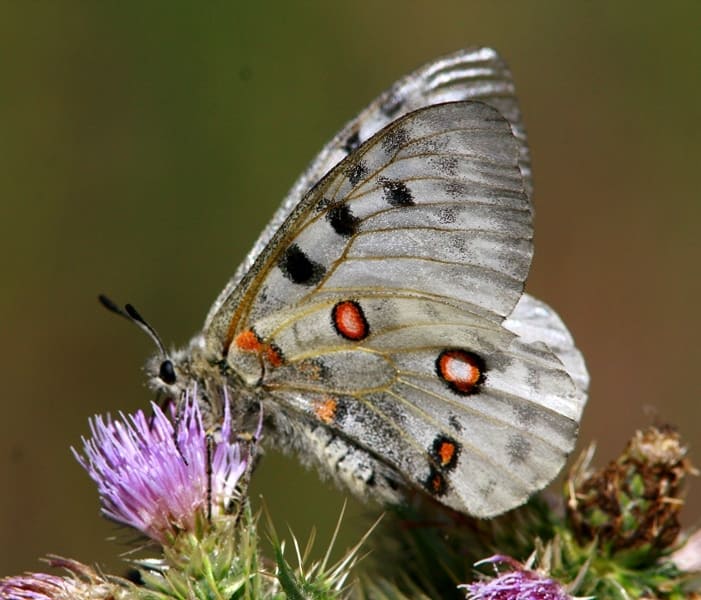
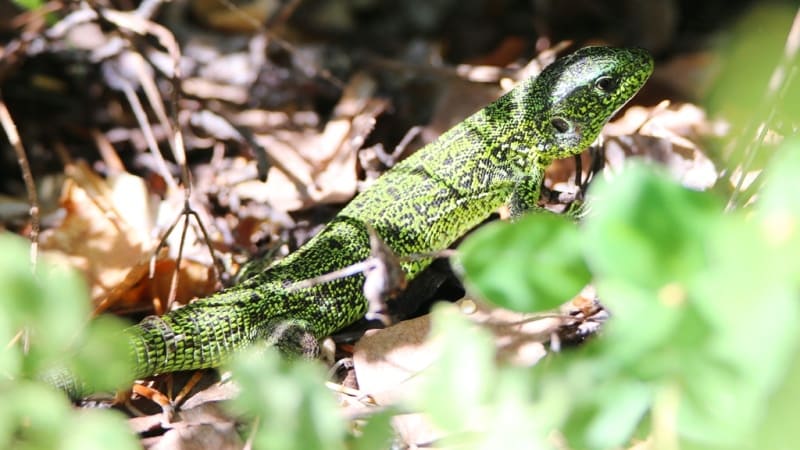
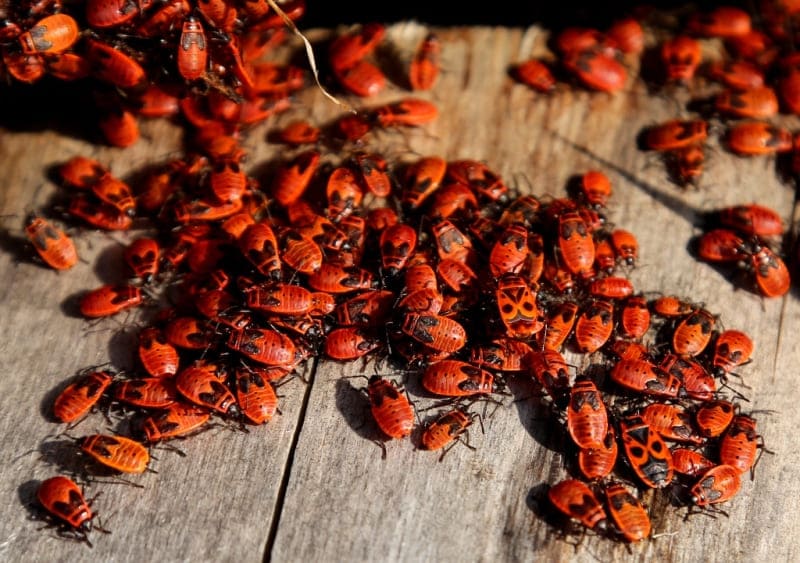
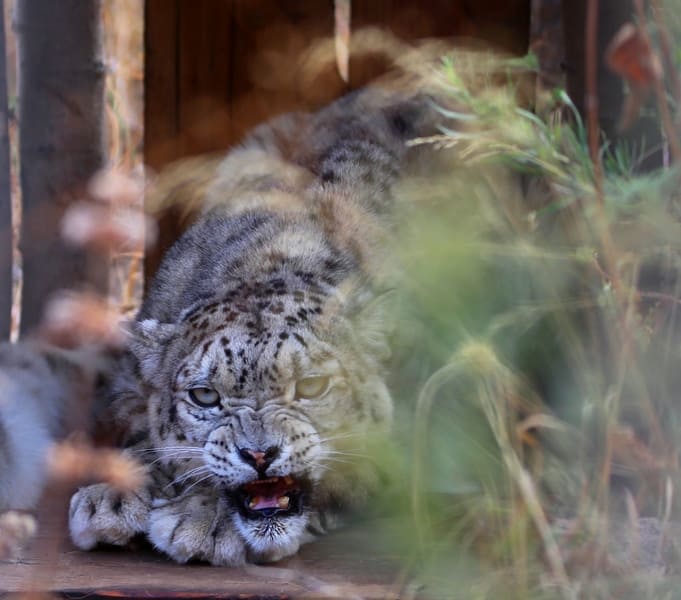
Authority:
“Management plan of the RSU “Zhongar-Alatau State National Natural Park” for 2022 - 2026. http://zhongaralatau.kz
Photos by:
Alexandra Petrova.







